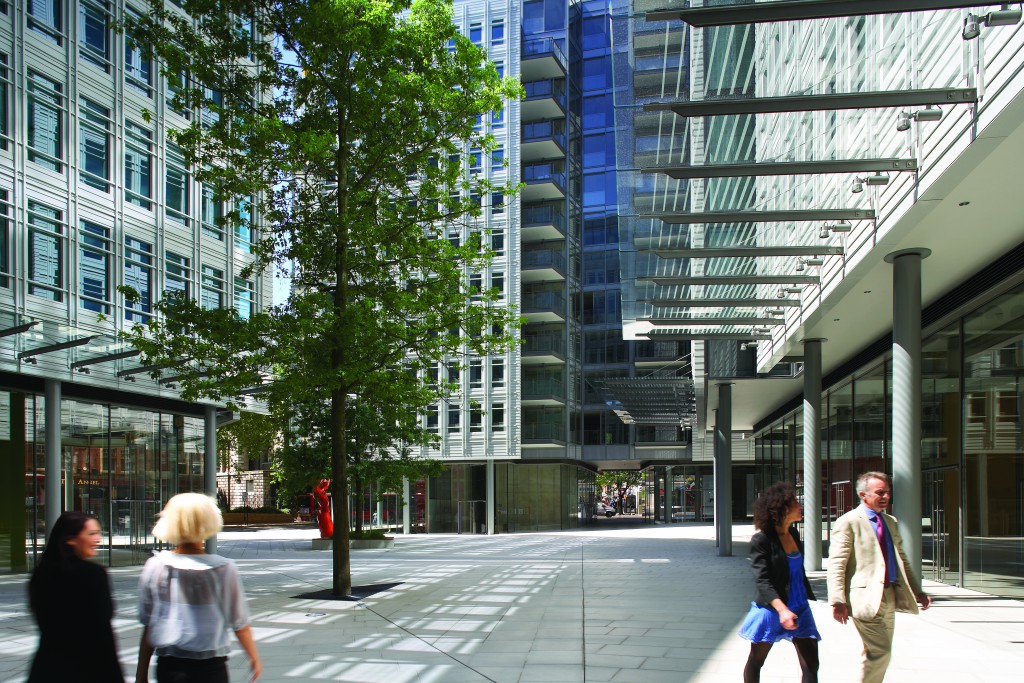
Reduce, reuse, recycle” is a well-known mantra, even for those who don’t spend most of their day thinking sustainability. But when it comes to recycling, how much do many of us know about the complexities and possibilities.
Here are some interesting facts about commercial glass recycling re-posted from Philippa Gill, Partner at Verdextra, a boutique consultancy with expertise in sustainability and health and well-being in real estate:
Last week, I had the pleasure of spending the day around Doncaster in the crisp, autumn sunshine. Thanks to British Glass, we first toured the glass recycling facilities of URM, then moved down the M62 to the Saint-Gobain factory to watch how this recycled ‘cullet’ is put back into the flat glass manufacturing process.
It is about 4 years since I asked a (very experienced) design team if anyone knew how we could re-purpose the glass facade of a building which we were about to refurbish. I was met with blank looks from around the table. And here is where my learning curve began.
(A moment here on the danger of the word ‘recycle’, and my decision NOT to use it here. For me, ‘recycle’ should come with a health warning along similar lines to ‘no added sugar’ in certain foods. Buyer Beware! Recycle can mean anything from turning a product into aggregates for asphalt to actually re-using the product. So a “99% recycled” statement can hide a host of complexity behind it. Similarly, ‘no added sugar’ can conceal that fact that naturally-occurring sugars can legally be added to certain foods without being declared as ‘added’).
So why do I even care whether the old glass facade gets turned into a road or into glass again? Here comes the science bit (with apologies to shampoo advertisers around the globe):
- Glass, to an amateur like me, turns out to be sand. Yes, sand. Melted at extremely high temperatures over 1500 deg. C and then cooled slowly. At its simplest, that is it.
- Humans have been making glass since about 3500BC (see Wikipedia) using essentially the same raw material and the same process. The picture above is from an Egyptian papyrus!
- Getting the sand to that temperature requires a vast amount of energy, both in powering the gas-fuelled furnaces into which it is poured and in the machinery required to contain half a mile of molten glass. Here’s how it’s done at Saint-Gobain
- The carbon emissions produced by the process are not pretty. Never mind the total embodied carbon story – sand extraction, transportation thereof, raw materials of the machinery, laminates and other additives….the list goes on. However, it turns out that reused cullet a) melts at a lower temperature and b) requires a simpler process and c) does not release carbon like new raw materials do, thus winning carbon points from both its re-use AND lower emissions from the manufacturing process.
- The recycled glass process is complex but allows 95-98% of all recyclable glass to be reused when making bottles and similar products. Most glass can be recycled, with the exception of treated glass found in items such as heatproof glass dishes.
- Best practice in the flat glass industry (windows, car windscreens, etc) is managing to use around 40% recycled content, due to the extremely high quality control process involved. You have to remember that a defect the size of a pound coin in a football pitch-sized area of new glass can cause the whole pitch to be defective. Quality control is justifiably obsessive at this end of the market, and the source has to be certified before (re)manufacturers will accept the old glass.
I had a very frustrating couple of months trying to find out how to get the facade recycled, until I finally found the team at British Glass. Thanks to their network, I was put in touch with URM, who told me that it was perfectly possible and not nearly as onerous as I had been led to believe.
So it was a heart-warming day in sunny Doncaster, seeing the sand living the circular economy dream. But there is much work to do if we are to push the property industry as a whole (along with its long supply chain) to recycle glass as part of normal business behaviour. Industry leaders in the glass sector are willing and able to take more cullet, and facade designers such as ARUP are already working on ‘design for deconstruction’ as part of their circular economy programmes.
In the meantime, tell everyone you know: commercial glass recycling is possible now!
Philippa Gill | November 2016
For more information, visit any or all of:
British Glass – www.britglass.org.uk
Saint-Gobain Glass – http://uk.saint-gobain-glass.com
URM Group – www.urmgroup.co.uk
ARUP Facades – http://www.arup.com/services/facade_engineering
Verdextra – www.verdextra.com







